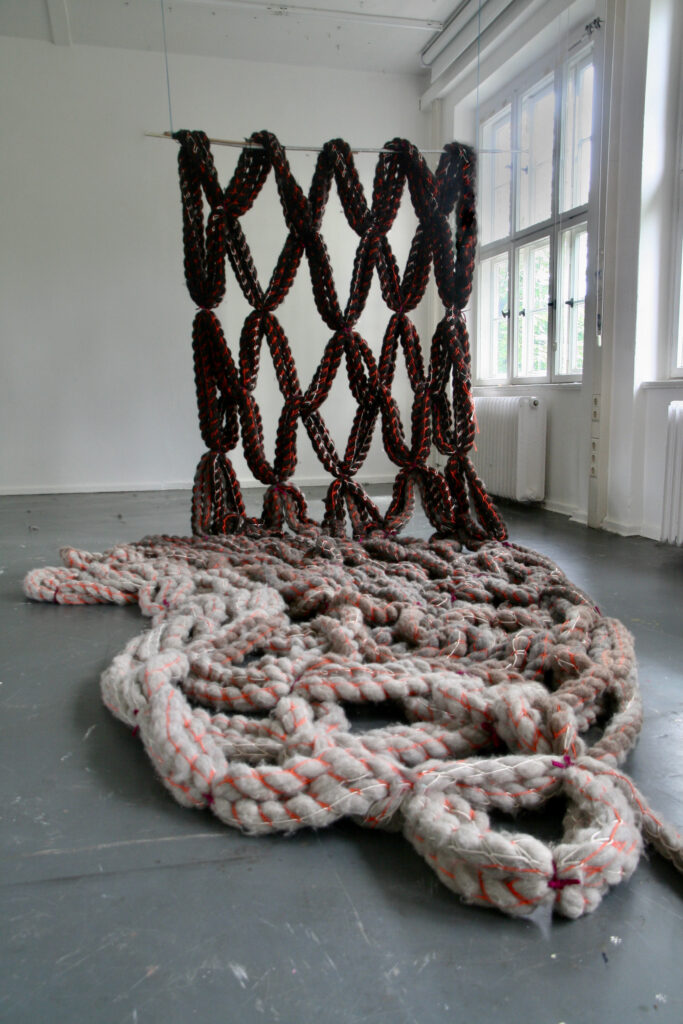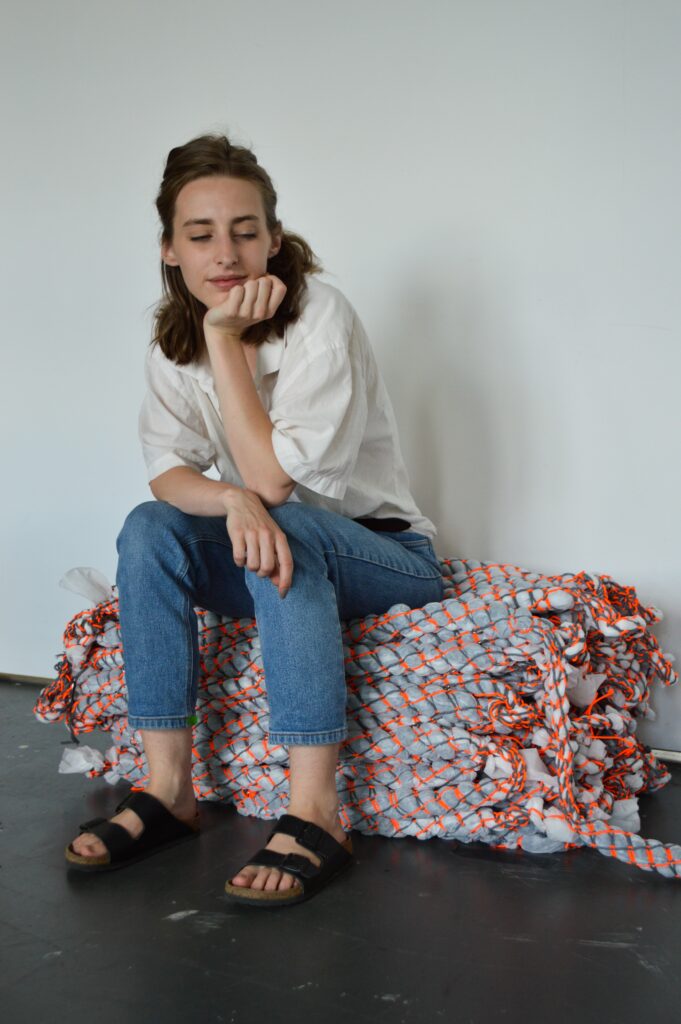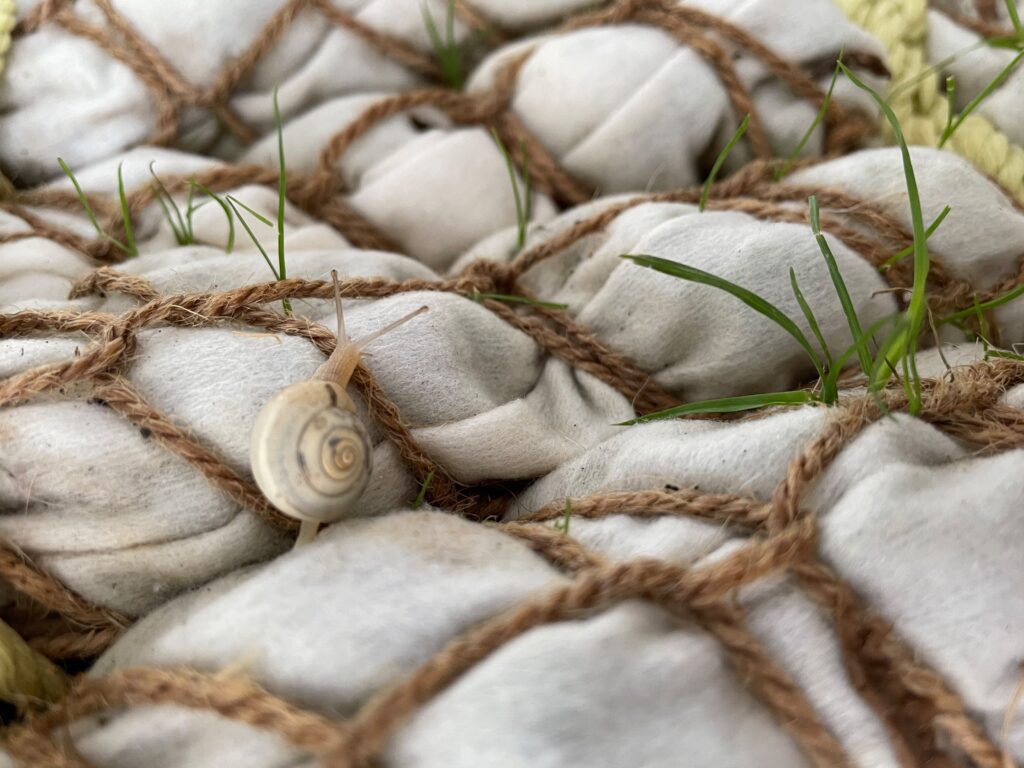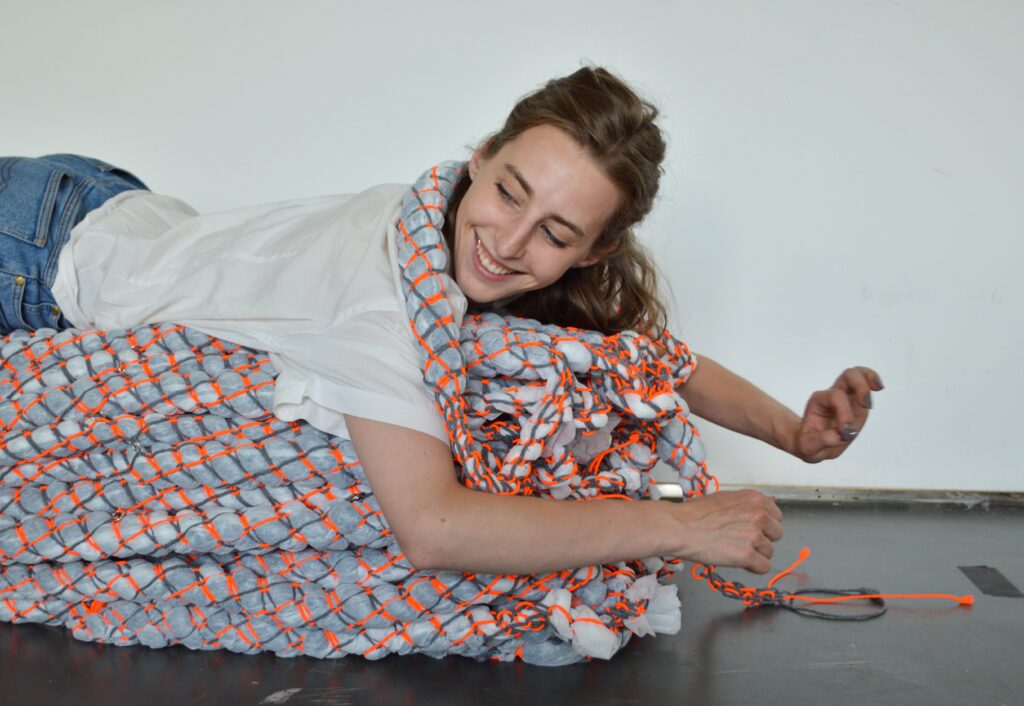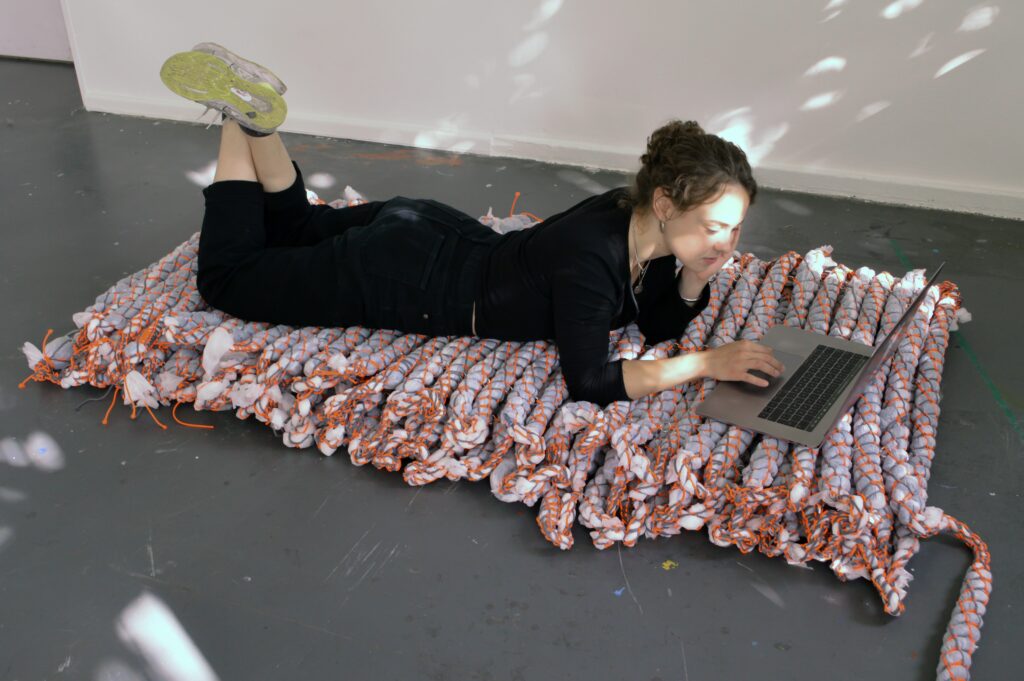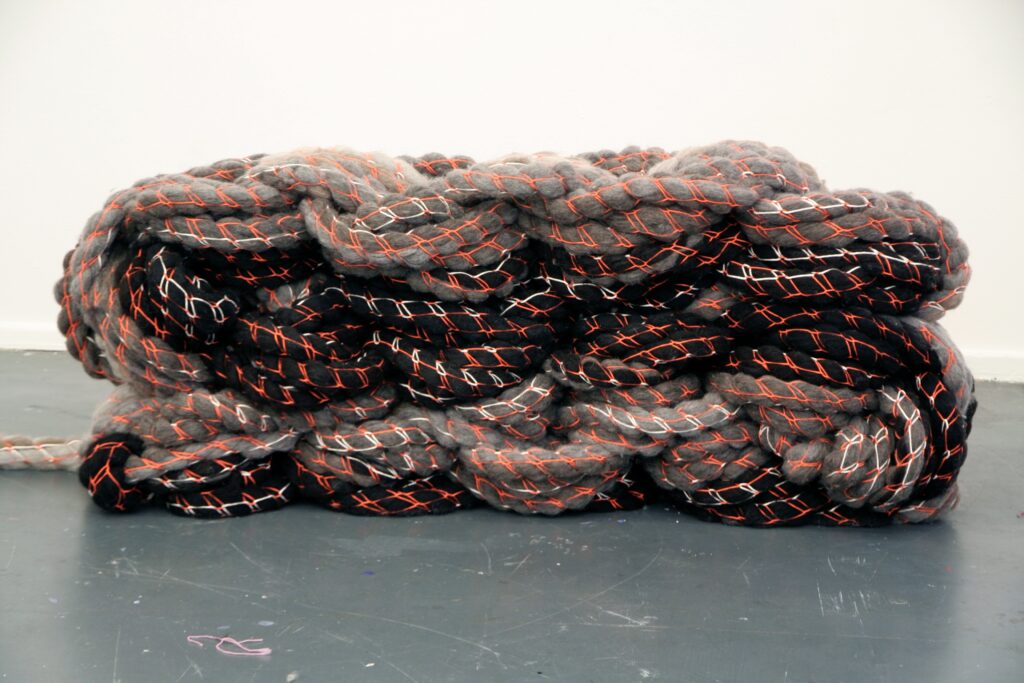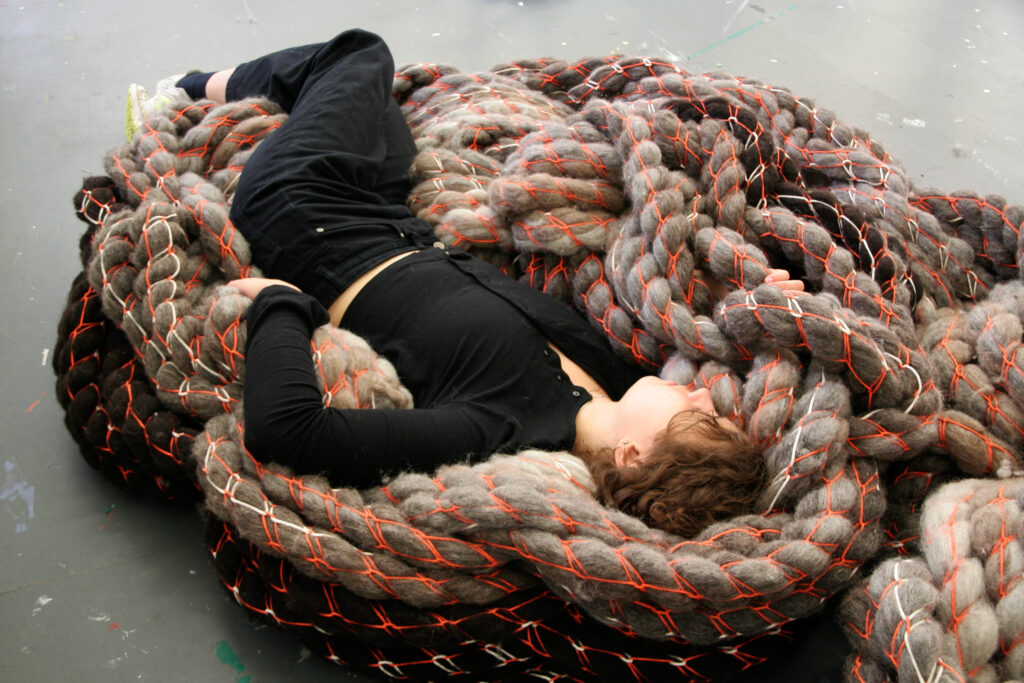Scaling Fiber: Experimental Yarn, SS 21
The MoA Design Research Studio "Scaling Fiber" works in cooperation with researchers of the Research Cluster "Matters of Activity" ( www.matters-of-activity.de ) and the Saxon Textile Research Institute ( www.stfi.de ) at the interface of design experimentation and practical implementation. In a transdisciplinary exchange with architecture, textile technology, material science and cultural studies, we discuss concepts for sustainable design and construction elements.
In the 19th century, the architect and theorist Gottfried Semper linked textiles with architecture and described the enclosure of space as a textile-based construction - as a "wall" that encloses space like garments enclose the body. We transfer the idea of the architectural textile to its central component: the yarn. Scaled from the micro-scale to the macro-scale, we interpret textile as a spatial scaffold. We explore sheath or hybrid yarns composed of different material components. Their materiality and form create new possibilities for joining, properties and functionalities.
The concept phase of the semester was divided into 3 thematic weeks to develop upscaled yarns: Environment, Material, Joining. In the fourth phase, three different surface structures were developed based on the yarns. In addition, a workshop was held with students from the Bauhaus 4.0 project to experiment with robotics-based yarn and surface creation.
The "architectural yarns" created in the project are flexible, linear structural elements several centimeters in diameter that have different properties depending on their fillings and sheathing. They can be repeatedly reconfigured into spatial structures through textile binding. The geometry and materiality of the filling and sheathing are designed and adapted according to the intended use and the desired joining method. In this way, the yarn can be "programmed" in an analoge way. The filling consists of loose earth, recycled wool or recycle textiles, which are bound into a strand by the sheathing. The binding of the structure derives from the logic of the material - rooting, felting or knotting. Building with this architectural yarn does not require any glue, mortar or synthetic resin. The individual parts can be easily separated and reused or recycled as monomaterial.
Earth yarn - Consists of earth, mixed with different seeds and covered with degradable fleece and cotton yarn. Interior textile capillary strands provide irrigation. The yarn has the property of coalescing its structure over time. It can be worked into a hanging or standing spatial structure. Time plays a major role: plants grow and change their appearance. As time goes by, the roots stabilize the surface at the linking points. The yarn can be used outdoors as a temporary, overgrown wall or indoors to improve the room climate.
Textile Yarn - Filled with shredded fibers, textile scraps, or any other coarse textile waste, this yarn takes advantage of the softness of its filling. Covered with fleece, cotton and rubber yarn, flexibility merges with stability. Gradients in the diameter and therefore softness can be created- Unfilled sections are used as structural links. Together with the filled, soft sections they provide a geometric programming for the layout of the yarn. The linear elements can be interconnected in a variety of ways, so that different spatial elements can be built from the same "yarn" and reconfigured over and over again - from to seat cushions.
Wool yarn - Consisting of sheep's wool fibers, dense, strand-like and at the same time soft structures can be created that invite you to touch and cuddle. As three-dimensional layerings, wall-like elements are created through a partial felting of the woolen fibers that generate stable connections - completely without additional connecting materials. Density and openness of the structure can be freely designed depending on the yarnlayout. Both, hanging and free-standing elements can be created, that use the properties of natural wool for acoustic or moisture regulation in the interior.
